Pancakes recipes from around the world: Crepes, pikelets, flapjacks and more
There are pancake people and there are … actually, there are only pancake people. Everyone likes pancakes. Homer Simpson loves pancakes. Actor Hugh Jackman makes his own for breakfast. Taylor Swift adores buckwheat crepes. Microsoft's Bill Gates once wrote an academic paper on the topic of pancake flipping, titled Bounds for Sorting By Prefix Reversal.
But how did something so simple become so universal? As history professor Ken Albala argues in his book Pancakes: A Global History, it's because "they are utterly indulgent and completely predictable." It's also because they're an excellent use of everyday ingredients such as milk, eggs, butter and flour. Slathered with butter and dripping with syrup, or stuffed with spicy pork and cabbage, they're the taste of home, wherever home may be.
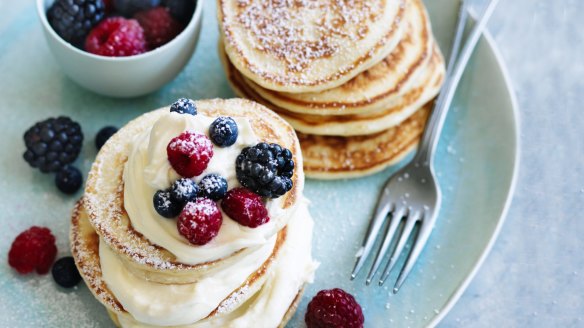
FROM THE AMERICAS
Buttermilk pancakes (USA and Canada)
The traditional, fluffy American pancake or Canadian flapjack is made with a simple batter of eggs, buttermilk, sugar, flour and baking powder. Add butter and maple syrup, and stack 'em high.
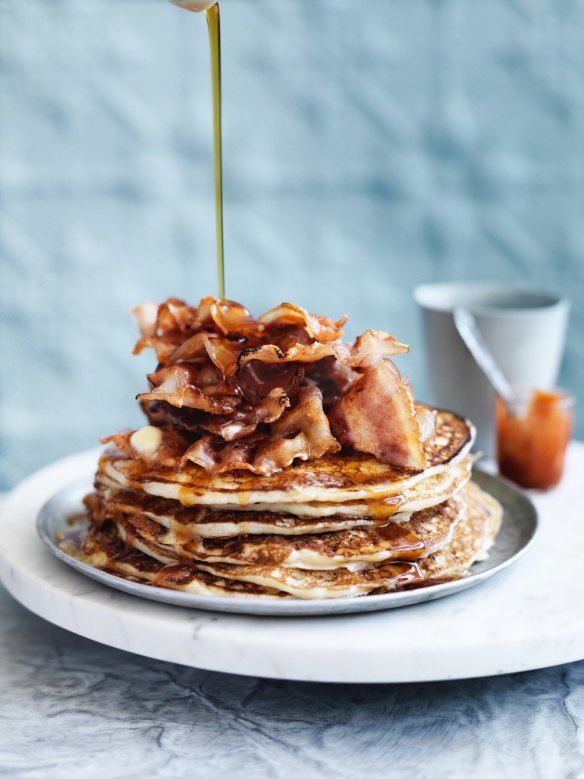
Panquecas (Brazil)
Thin wheat flour pancakes rolled around a filling of meat, chicken or vegetables and topped with a thick, rich tomato sauce. Serve with rice and beans for the full monty.
Cachapas (Venezuela/Colombia)
A traditional street snack, these thick savoury pancakes have been made with stone-ground corn kernels since pre-Colombian times. While hot, they're folded over a slab of soft white queso de mano or pork chicharrons.
Arepas (Venezuela/Colombia)
Thick, spongy and completely addictive pancakes made with ground maize dough, split and filled with anything from white cheese to avocado, chicken, roast pork, shredded beef or black bean.
FROM GREAT BRITAIN AND IRELAND
Boxty (Ireland)
Much loved in Ireland's northern counties, boxty mixes grated raw potato with mashed potato, because you can't have too much potato in Ireland.
Scotch pancakes (Scotland)
The Scottish grandpa of the American pancake, Scotch pancakes (known to grandmothers everywhere as drop scones) are thick, light, soft and a little sweet. Serve with butter and golden syrup.
FROM EUROPE
Crepe (France)
The lingerie of the pancake world – very fine, almost silky, lace-edged pancakes made with plain flour (crepe sucree) or buckwheat flour (galette). Spread with chocolate or confiture (jam), or flambe crepes suzette at the table.
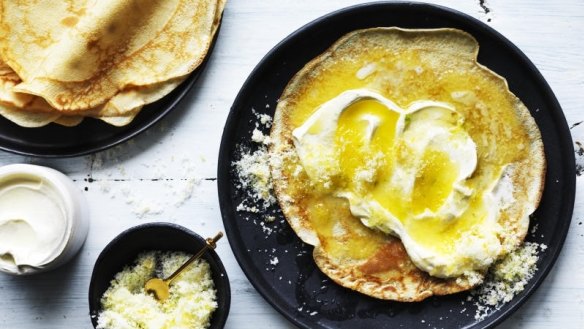
Pannekoeken (The Netherlands)
The Dutch love pancake of all kinds, especially puffy, oven-baked pannekoeken, cooked in a blisteringly hot, rounded pan just like Britain's Yorkshire pudding. Finish with sweet, dark apple syrup or fresh cheese.
Crespelle (Italy)
Basically your French crepe with an Italian accent, crespelle appear in numerous regional variations, sometimes made with chestnut flour. Also known as manicotti, they can be stuffed, rolled and baked in cheese or tomato sauce.
Farinata (Italy)
A type of thin, unleavened pancake made from a batter of chickpea flour, olive oil and water that dates back to Roman times. Made all along the Ligurian coast and into the south of France, where it is known as socca.
Tiganites (Greece)
Greece's favourite pancakes are served drizzled with honey and strewn with walnuts just as they were in the 6th century BC. Also brilliant with cinnamon and yoghurt, or vegetables and cheese.
Kaiserschmarrn (Austria)
At last, something that isn't flat and round. The ''emperor's mess'', named for Kaiser Franz Joseph I, is a light, fluffy pancake shredded into pieces with a fork while frying, dusted with icing sugar and served with fruit compote.
FROM NORTHERN AND WESTERN EUROPE
Pannukakku (Finland)
The lemon-scented pannakakku is cooked in the oven rather than a frying pan, and served with whipped cream and fruit. Also little known outside Finland is pinaattiletut, which is alarmingly green with spinach.
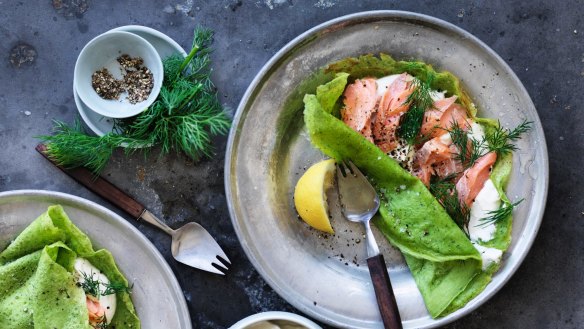
FROM WESTERN EUROPE & RUSSIA
Palacsinta (Hungary)
Sweet white wine is the secret ingredient behind Hungary's favourite pancakes, served with jam and walnuts or cottage cheese, poppy seeds or mushrooms.
Blini (Russia)
The perfect accompaniment to smoked salmon and caviar, this little yeasted pancake is made with dusky buckwheat flour, making it one of the stars of the magnificent Russian zakuski (hors d'oeuvres) table.

FROM ASIA
Banh Xeo (Vietnam)
One of the great streetfood dishes of the world, this crisp, paper-thin savoury ''sizzling'' pancake is made with a batter of rice flour and turmeric, folded over pork, prawn, spring onions and bean shoots.
Kimchijeon (Korea)
Korea does some pretty awesome pancakes, like this savoury one that incorporates fermented kim chi – and often pork – into the batter.
Okonomiyaki (Japan)
Okonomi means "what you like" so add what you like to the batter – shredded cabbage, pork belly, calamari, octopus, prawns – then stripe the top with okonomi sauce (like barbecue sauce) and waaaaay too much mayo.
Bao Bing (China)
Known in the west as Mandarin pancakes, these paper-thin crepes are ingeniously made from little more than plain flour and boiling water. Most commonly seen wrapped around the nearest peking duck.
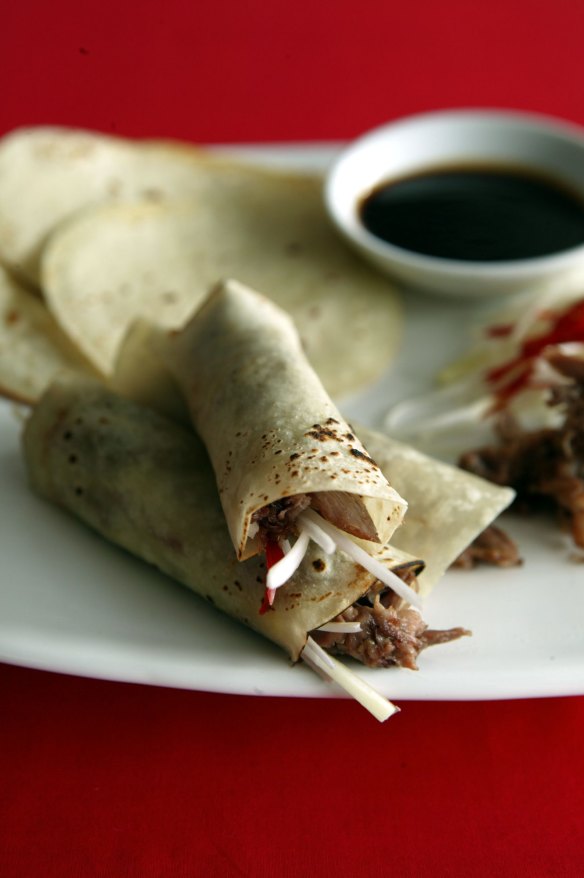
Kanom Buang (Thailand)
Follow that sweet, toasty smell to the kanom buang stall at any Thai street market for elegantly lacy, crisp pancakes folded around coconut cream.
Apam Balik (Malaysia)
Filled with sweet buttery peanuts and corn, apam balik is so crisp that one bite will shatter it into pieces. Small wonder it has been declared an important heritage food by the Malaysian Department of National Heritage.
Roti Jala (Malaysia)
These soft, lightly chewy, lacy pancakes are made from strings of batter pushed through a special perforated scoop so they form a net. Just the thing with curries and rice.
Dosa (India)
One of the highlights of South Indian vegetarian cooking, this giant, thin crisp of fermented rice and urad dal (black gram) is eaten plain or rolled around a filling of cooked spiced potatoes for masala dosa.
Chataamari (Nepal)
Can someone please open a chataamari shop? We need this savoury rice flour pancake, or ''Kathmandu pizza'' in our lives, topped with minced meat and fried eggs.
FROM AUSTRALIA
Our pancake claim to fame is the pikelet, inherited from the Welsh ''bara piglydd''. It's quick, easy and loved by kids of all ages, topped with butter or jam and cream.
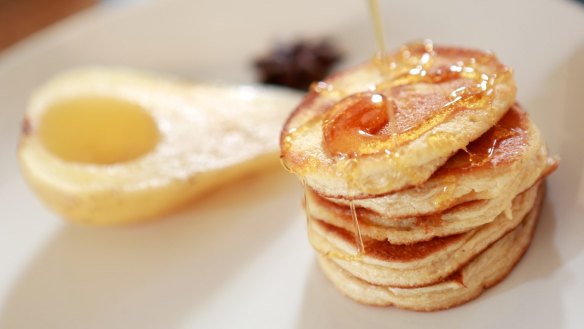
FROM AFRICA AND THE MIDDLE EAST
Beghrir (Morocco/Algeria)
Commonly known as the thousand-hole pancake, beghrir is a yeasted semolina crepe cooked only on one side, giving it a crumpet top riven with holes like honeycomb – all the better to soak up the honey and melted butter.
Kabalagala (Uganda)
More a fritter than a regular pancake, this is the taste of home for Ugandans, made from mashed, over-ripe plantains, eggs, sugar and cassava flour and served with sliced banana, jam or honey.
Anjero (Somalia)
Known as injero in Ethiopia and lahoh in Yemen, anjero are irresistibly yeasty, spongy, breakfast Somali pancakes, often served with a bowl of maraq, vegetable soup.
